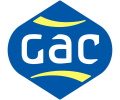Commodity Tracker: 4 charts to watch this week

This week we kick off with Chinese energy and commodity trends: in power generation, renewable share has grown at the expense of thermal, while steel markets are looking for signs of improving demand. Plus, a look at the pattern of US energy costs and recessions, and California low-carbon power generation.
1. China’s use of thermal fuels for power generation likely to decline in 2022
What’s happening? China’s power demand averaged 903 GW in May, a decline of 1 aGW year on year. This continues a trend of low power demand growth seen for several months. For the period between January and May, power demand has only grown by 3.9%, annualized, versus 19.5% one year ago. However, there have been large increases in power generation from all kinds of renewables. As a result, the thermal gap has declined, and with it the use of both gas and coal.
What’s next? The strong output from renewables should continue, while power demand could get a boost from the stimulus package announced May 23. However, even a relatively strong increase in power demand for the second half of the year will not prevent a decline in the use of thermal fuels for 2022.
2. Chinese steelmakers look for signs of demand recovery
What’s happening? Pandemic-led restrictions and a slowdown in the property sector have been dragging down end-user steel demand over the past few months in China, creating a supply glut. As a result, prices of steel and raw materials such as iron ore have come under pressure. The benchmark price of iron ore CFR China has fallen 21% from a monthly peak to $116.05/dmt June 22, according to S&P Global Commodity Insights data.
What’s next? China’s gradual easing of lockdowns in major economic centers recently has slowly started lifting prospects, but at the same time, a slow demand season ahead will not make it easy for steel suppliers. Production cuts are happening at a smaller scale, mostly at electric arc furnaces. While over the next few months, steel demand is expected to rise due to a stimulus push targeting the property and infrastructure sector, the demand outlook remains challenging in the near term. Steel inventories have been sharply higher, and any output cuts are expected to remain modest for the rest of June, providing no immediate relief to the supply glut. Weak margins are also expected to weigh on pig iron production, as mills prioritize cost efficiency. Iron ore prices remained rangebound in the week ended June 24, but markets will be closely watching the pace of steel demand recovery and output cuts in the coming weeks for any clarity on price direction.
3. High cost of energy relative to consumer incomes carries echoes of past recessions
What’s happening? Energy costs to US economy have risen sharply in the last two years, evidenced by a sharp rise in energy consumption expenditures as a percentage of wages and salaries. Both figures are reported monthly by the Bureau of Economic Analysis in their Personal Income Report. During this cycle, that burden has risen by 2.2 percentage points to just above 7%. The cost of energy goods to the economy is still relatively low versus that seen in earlier decades and even as recently as 2014. However, all recessions since 1970 have been preceded by or coincident with a noteable rise in the cost of energy.
What’s next? Clearly the rising cost of energy is a headwind for the US economy. The ability to grow wages and salaries is another headwind, but strong wage increases and a tight labor market coming out of the pandemic have been supportive. Whether the 2.2 percentage point increase in energy costs is enough to tip the US economy into recession remains to be seen. If employment begins to contract, then in a sense a recession is unfolding by definition. For now, yellow caution lights are flashing. Factoring in the increase seen in food prices could paint an even more worrisome picture. Still, energy is a much smaller component of consumer expenditures than in the past due to higher fuel efficiencies. Also of note, there have been instances where a rise in energy costs have not induced a recession. And coming out of the 2001 recession, the economy tolerated a rise in energy prices that extended to 2005 without inducing a recession – so stay tuned.
4. Lower-carbon generation drives gas out of California power mix in June
What’s happening? Robust wind, solar, and hydropower generation in the California Independent System Operator service area so far this June has reduced demand for gas-fired generation compared to the same time last year. The lower call on gas by the power sector has reduced total gas demand in California and the Southwest by 1 Bcf/d, or 10%, month-to-date compared with year-ago levels, weakening basis spreads to cash Henry Hub for regional spot gas prices.
What’s next? S&P Global’s Platts Analytics expects the conditions that have allowed stronger hydropower generation and power imports to continue into July and August, helping to soften gas-fired power demand and spot gas prices in California. The state has also added around 2 GW of utility-scale solar capacity since last summer, bolstering the potential for solar generation.
Reporting and analysis by Andre Lambine, Alan Struth, Rohan Somwanshi, analyst Jing Zhang and Kelsey Hallahan
Source: Platts

 Hellenic Shipping News Worldwide Hellenic Shipping News Worldwide, Online Daily Newspaper on Hellenic and International Shipping
Hellenic Shipping News Worldwide Hellenic Shipping News Worldwide, Online Daily Newspaper on Hellenic and International Shipping





















 PG-Software
PG-Software